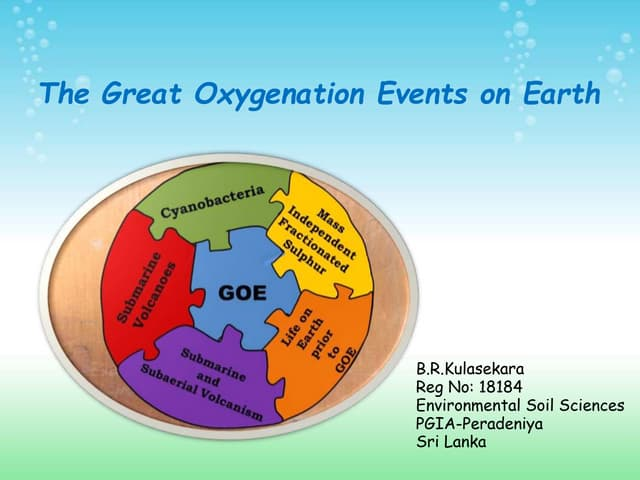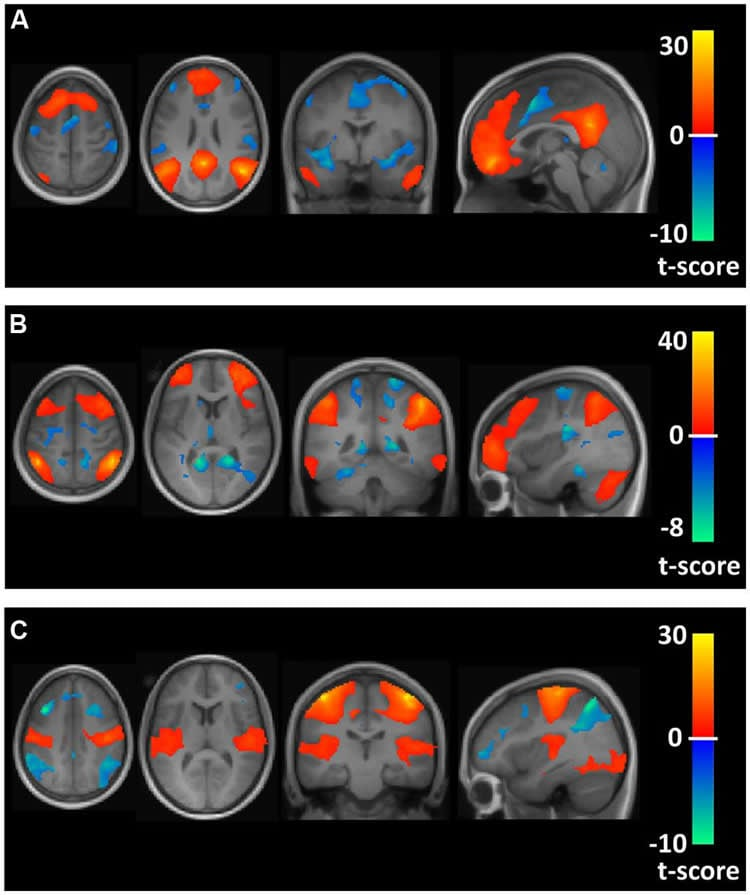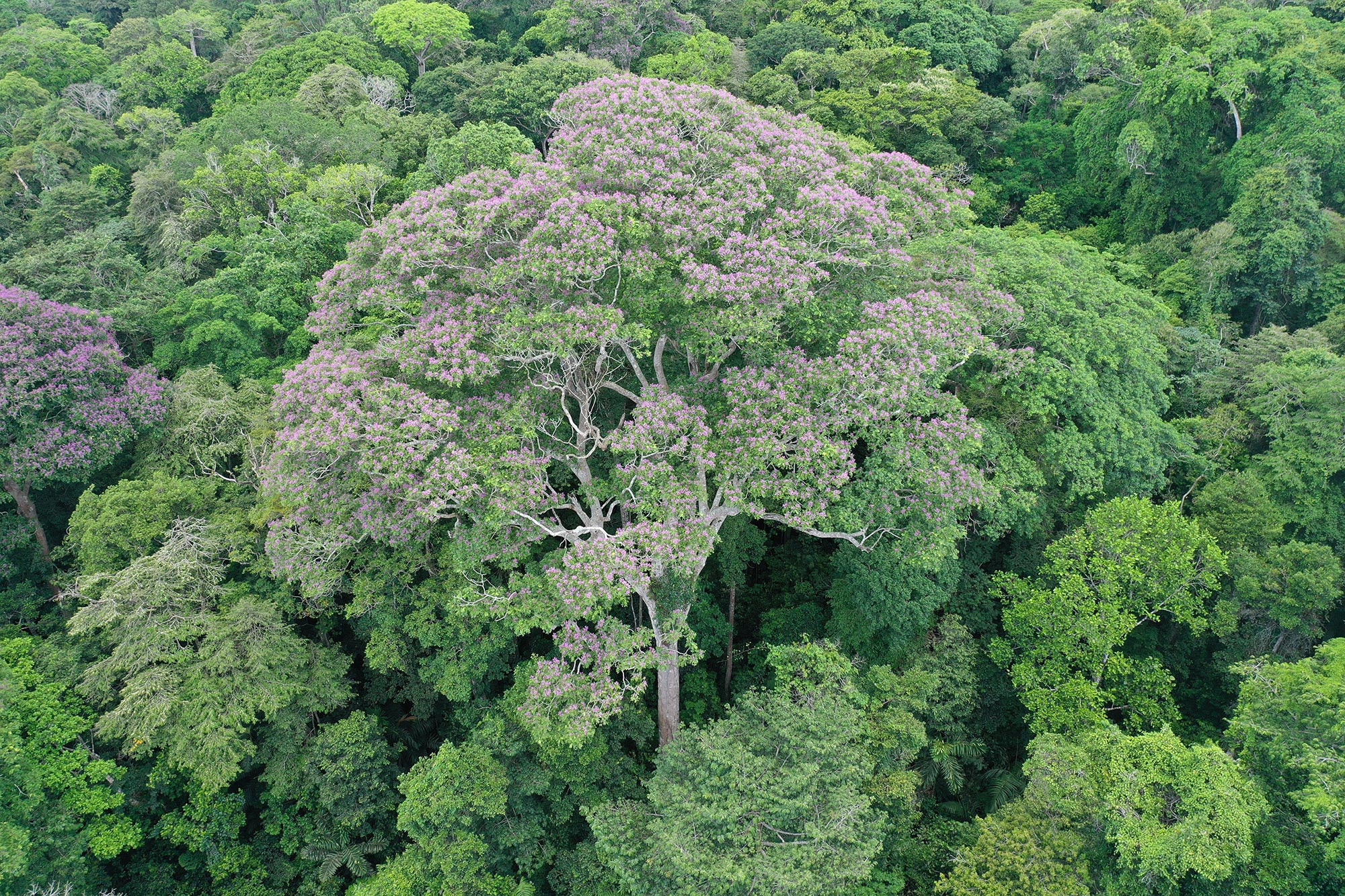The Great Oxidation Event (GOE) marks one of the most significant transformations in Earth’s atmospheric history, a dramatic shift that began approximately 2.4 billion years ago. Prior to this period, the atmosphere was largely devoid of oxygen, until the emergence of cyanobacteria, which harnessed sunlight to power photosynthesis and subsequently released oxygen into the oceans and air. As these microorganisms flourished, they set the stage for a gradual accumulation of oxygen, paving the way for the evolution of aerobic bacteria that would thrive on this newfound resource. The GOE was not just a pivotal moment in Earth’s evolutionary timeline of bacteria; it also catalyzed a vast array of biological and ecological changes that shaped our planet’s future. Understanding this event illuminates the development of photosynthesis and highlights the complex interconnections between microbial life and atmospheric evolution.
Often referred to as the Oxygen Crisis, the Great Oxidation Event was a crucial milestone that redefined Earth’s biosphere about 2.4 billion years ago. During this remarkable epoch, microscopic organisms like cyanobacteria played a revolutionary role in generating breathable air through the process of photosynthesis. This transformative phase not only increased oxygen levels in the atmosphere but also facilitated the rise of aerobic life forms that depend on oxygen for survival. The emergence of new metabolic pathways concurrently reshaped the evolutionary landscape, setting the stage for diverse biological innovations. By exploring the implications of this event, we gain invaluable insights into both past life forms and the subsequent evolution that continues to define our planet.
Understanding the Great Oxidation Event
The Great Oxidation Event (GOE) marks a significant turning point in Earth’s atmospheric history, occurring approximately 2.4 to 2.1 billion years ago. During this period, cyanobacteria, a group of microorganisms that perform photosynthesis, began releasing oxygen as a byproduct into the oceans and eventually the atmosphere. This oxygen accumulation fundamentally transformed Earth’s environment, paving the way for the development of aerobic life forms. Before this event, the atmosphere was largely devoid of oxygen, consisting mainly of methane, ammonia, and hydrogen sulfide.
The implications of the Great Oxidation Event extended beyond just the increase in atmospheric oxygen; it also facilitated a dramatic shift in microbial ecosystems. As oxygen levels rose, it allowed for the evolution of aerobic bacteria, which thrive in oxygen-rich environments. This evolutionary milestone transformed the evolutionary timeline of bacteria, leading to the development of diverse life forms capable of utilizing oxygen for energy production. Understanding the GOE is crucial, as it set the stage for complex life to flourish on Earth.
The Role of Cyanobacteria in Oxygen Production
Cyanobacteria are often heralded as the pioneers of photosynthesis and oxygen production on Earth. Their ability to convert sunlight, carbon dioxide, and water into energy while releasing oxygen revolutionized the planet’s atmosphere. As these microorganisms thrived in ancient oceans, they created a hospitable environment for more complex life forms by gradually increasing the oxygen concentration in the atmosphere. This evolutionary innovation not only allowed for the emergence of aerobic bacteria but also paved the way for the eventual colonization of land by plants and animals.
Moreover, the development of photosynthesis in cyanobacteria played a crucial role in shaping Earth’s ecosystem dynamics. The oxygen generated from their metabolic processes contributed to the formation of the ozone layer, which protects the surface of the planet from harmful ultraviolet radiation. This significant reduction in UV exposure further enabled various life forms to evolve and adapt, solidifying the role of cyanobacteria as a keystone species in Earth’s evolution. The intricate relationship between cyanobacteria and changing atmospheric conditions emphasizes the vital importance of microbial life in Earth’s history.
Aerobic Bacteria and Their Evolutionary Timeline
Recent discoveries suggest that aerobic bacteria may have developed much earlier than previously thought, preceding the Great Oxidation Event. Through advanced techniques such as phylogenetic reconciliation and extensive genomic analysis, researchers have revealed that certain bacterial lineages likely adapted to oxygen in their environments, demonstrating sophisticated evolutionary strategies. These findings imply that the evolutionary timeline of bacteria is far more complex than the simple narrative of anaerobic life forms prevailing before the GOE.
The emergence of aerobic bacteria prior to the GOE poses new questions about the interplay between organisms and their environments. It suggests that early bacteria may have coexisted with low but increasing levels of oxygen, allowing them to gradually exploit this energy source. Understanding how these adaptations occurred can shed light on the evolutionary pressures that shaped bacterial diversity and the overall dynamics of Earth’s biosphere, emphasizing that microbial evolution is intricately linked with geochemical changes across geological time.
Implications of the New Research on Earth’s Atmospheric History
The recent study reconstructing the evolutionary history of bacteria has significant implications for our understanding of Earth’s atmospheric history. By revealing that some aerobic bacteria appeared roughly 3.22 to 3.25 billion years ago, researchers challenge long-held views that life before the Great Oxidation Event was predominantly anaerobic. This new perspective illustrates that complex microbial life was adapting to oxygen in various capacities much earlier than expected, indicating a more intricate web of interactions among early organisms.
Additionally, these findings highlight how microbial activities have been instrumental in shaping the planet’s chemical makeup over billions of years. As researchers continue to explore the connections between microbial evolution, oxygen production, and climatic shifts, we gain a deeper appreciation of how life has influenced Earth’s environment. This need for holistic scientific understanding underscores the importance of studying bacterial evolution and its broader impact on ecological systems.
Cyanobacteria: The Blueprint for Life as We Know It
Cyanobacteria, often referred to as blue-green algae, serve as a fundamental blueprint for understanding the evolution of life on Earth. Their capacity for photosynthesis not only introduced oxygen into the atmosphere but also catalyzed a series of ecological transformations. This group of microorganisms has persisted through millennia, adapting to various climates and conditions, ultimately influencing the evolutionary paths of other organisms. Their genetic, metabolic, and ecological versatility make them a subject of great interest to evolutionary biologists.
In addition, the ability of cyanobacteria to fix nitrogen has profound implications for nutrient cycling and ecosystem productivity. By contributing to soil fertility, these organisms have directly impacted the evolution of terrestrial life. The study of cyanobacteria’s resilience and adaptability provides crucial insights into how life can thrive in changing conditions, reminding us of the vital roles played by microorganisms in sustaining Earth’s ecological balance.
Investigating the Co-Evolution of Bacteria and Earth’s Atmosphere
The co-evolution of bacteria and Earth’s atmosphere is a fascinating area of study that reveals the dynamic interplay between life forms and their environments. The research illustrating the early emergence of aerobic bacteria underscores how living organisms actively contributed to the atmospheric changes that shaped Earth’s climate. The mutual adaptations of bacteria and their ecological environments inform us about resilience and adaptability, key traits for survival in our ever-changing planet.
Exploring this relationship not only enhances our understanding of historical biogeochemical cycles but also raises questions about potential future scenarios in the context of climate change. As microbes continue to influence atmospheric conditions today, studying their past adaptations provides critical insights into how we can address current environmental challenges and anticipate future ecological shifts. The lessons from Earth’s distant past remain pertinent as we navigate the complexities of microbial life in a modern context.
Revising Our Understanding of Aerobic Metabolism
The revision of our understanding regarding the timeline of aerobic metabolism can significantly reshape the framework within which we view evolutionary biology. The recent findings that aerobic bacteria may have existed before the Great Oxidation Event shake the foundations of how we interpret the evolutionary timeline of life on Earth. It suggests a remarkable adaptability among early bacteria, enabling them to thrive in a progressively oxygenated atmosphere long before it became widespread.
These revelations also have implications on the mechanisms of metabolic evolution. Understanding how early bacteria evolved to utilize oxygen not only enhances our knowledge of microbial ecology but also contributes valuable insights into the biogeochemical cycles that sustain ecosystems. This deeper understanding of aerobic metabolism is critical in addressing modern biological and ecological challenges, highlighting the interconnectedness of life’s evolutionary narratives.
The Role of Fossils in Understanding Bacterial Evolution
Fossils serve as crucial evidence for unraveling the evolutionary history of bacteria and other microorganisms, providing tangible links to understand the past. While the fossil record for bacteria is scarce, the integration of geological data with genomic analysis has strengthened our interpretations of their evolution. By studying these ancient remnants, researchers can infer the characteristics and habitats of early life forms, shaping our understanding of how they might have interacted with their environments.
Fossils not only support hypotheses regarding bacterial evolution and adaptation but also contribute to a broader understanding of the Earth’s geological history. The evolution of life is intrinsically tied to the changes in planetary conditions, and fossil evidence is key to reconstructing these transitions. Future studies that delve into the fossil records of microorganisms will continue to unveil insights into bacterial emergence and adaptation that are essential to pieces of Earth’s intricate puzzle.
Future Directions in Microbial Evolution Research
As we continue to uncover the complexities of microbial evolution, future research must build upon the groundbreaking findings regarding early aerobic bacteria and the Great Oxidation Event. Advancements in genomic technologies and interdisciplinary approaches are essential for unraveling the evolutionary strategies of bacteria in response to Earth’s shifting environments. These efforts will provide a more nuanced understanding of how organisms adapt and thrive amid changing atmospheric conditions.
Further investigations into the genetic adaptations of various microbial lineages will have important implications for both ecology and biotechnology. Understanding how bacteria evolved in response to early oxygenation may inspire innovative applications in bioremediation and sustainable energy solutions. The exploration of microbial evolution remains a promising frontier that not only enriches our knowledge of life’s history but also offers potential pathways toward addressing contemporary environmental challenges.
Frequently Asked Questions
What was the Great Oxidation Event and its significance in Earth atmospheric history?
The Great Oxidation Event (GOE) refers to a significant increase in Earth’s atmospheric oxygen levels that occurred between 2.4 and 2.1 billion years ago. This event is crucial in Earth atmospheric history as it marked the transition to an oxygen-rich atmosphere, primarily due to the photosynthetic activity of cyanobacteria, which generated oxygen from sunlight. This shift had profound effects on Earth’s biosphere and paved the way for the evolution of aerobic life forms.
How did cyanobacteria contribute to the Great Oxidation Event?
Cyanobacteria played a pivotal role in the Great Oxidation Event by utilizing photosynthesis to convert sunlight into energy while releasing oxygen as a byproduct. Around 2.7 billion years ago, these microorganisms began to proliferate in the oceans, releasing substantial amounts of oxygen into the environment. Their activities led to the gradual accumulation of oxygen in the atmosphere, significantly altering Earth’s chemical landscape and enabling the evolution of aerobic bacteria.
What do recent studies suggest about aerobic bacteria before the Great Oxidation Event?
Recent studies indicate that aerobic bacteria may have emerged long before the Great Oxidation Event. Research has shown that certain bacterial lineages could adapt to low levels of oxygen as early as 3.22 to 3.25 billion years ago. This challenges the previous belief that most life prior to the GOE was anaerobic and suggests some early bacteria had already begun to utilize oxygen much earlier than once thought, paving the way for the later dominance of cyanobacteria and the atmospheric changes during the GOE.
How does the evolutionary timeline of bacteria relate to the Great Oxidation Event?
The evolutionary timeline of bacteria is closely linked to the Great Oxidation Event as it represents a key transition in the metabolism of life on Earth. Studies have reconstructed the evolutionary history of bacteria, indicating that the last common ancestor of modern bacteria existed between 4.4 and 3.9 billion years ago, with some bacteria developing oxygen-metabolizing capabilities prior to the GOE. This adaptation likely facilitated the emergence of cyanobacteria, emphasizing the evolutionary connection between early bacterial life and the oxygenated atmosphere that followed.
What impact did the Great Oxidation Event have on life forms on Earth?
The Great Oxidation Event significantly impacted life forms on Earth by allowing for the evolution of aerobic organisms that depend on oxygen for survival. As cyanobacteria generated more oxygen through photosynthesis, the atmosphere transformed, leading to the diversification of life forms capable of metabolizing oxygen. This event not only shaped the biosphere but also laid the foundation for complex life to emerge, ultimately leading to the vast array of species we see today.
| Key Point | Details |
|---|---|
| Oxygen in Atmosphere | Today, oxygen constitutes about 21% of the Earth’s atmosphere. |
| Cyanobacteria Evolution | Around 2.7 billion years ago, cyanobacteria evolved, releasing oxygen through photosynthesis. |
| Great Oxidation Event | The Great Oxidation Event (GOE) occurred between 2.4 and 2.1 billion years ago as oxygen began to accumulate in the atmosphere. |
| Aerobic Bacteria | Research indicates aerobic bacteria may have appeared prior to the GOE, adapting to oxygen long before it became widespread. |
| Evolutionary Research | An international team reconstructed bacteria’s evolutionary tree using genomic data, fossils, and geochemical history. |
| Significance of Findings | The study sheds light on how some aerobic bacteria likely emerged around 3.22 to 3.25 billion years ago, influencing the evolution of cyanobacteria and subsequent atmospheric changes during the GOE. |
Summary
The Great Oxidation Event (GOE) marks a pivotal moment in Earth’s history, characterized by a significant increase in atmospheric oxygen levels resulting from the activities of cyanobacteria. Recent research challenges previous notions by suggesting that the adaptation of aerobic bacteria may have begun before the GOE itself, indicating a more complex interplay between early life forms and Earth’s evolving atmosphere. This study not only enhances our understanding of microbial evolution but also emphasizes how billions of years of microbial activity have shaped the air we breathe today.



